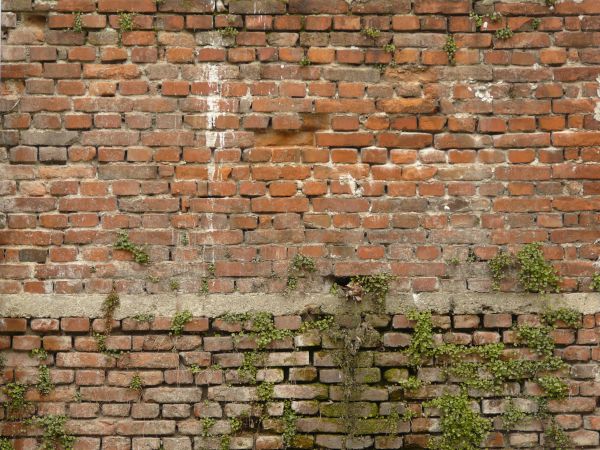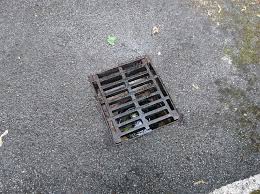Technical discussions about Deterioration of building Structure & instructions about Repair & Maintenance.
In the buildings the cracking in the RCC item is mainly due to rusting of reinforcement. Also cracking in the concrete, mortar, walls, plaster, tiling etc. is due to shrinkage, creep, deformation due to load etc. Also cracking is due to chemical reaction, volume change, moisture movement, thermal movement, vegetations, foundation movement & settlement of soil etc. Chemical deteriorating actions are chloride attack, sulphate attack, alkali-aggregate reaction.
Which can be controlled but carbonation is continuous process in life of structure. The crack width, cracking, deteriorating actions can be controlled by proper planning & engineering designing, by using proper materials & by correct/standard practice of construction at the time of execution of project to make structure durable. It is admitted belief that manmade permanent structure should have minimum100 years of expected satisfactory life.
Rusting of Reinforcement & cracking of concrete:
In the buildings the important issue is cracking in the RCC member which is mainly due to rusting of reinforcement. The product of corrosion occupy as many as up to six times of original volume of steel resulting in cracking of concrete, exposing reinforcement to environment & further increasing speed of corrosion. Early rusting & cracking is observed at places where concrete cover is nearly nil or inadequate & buildings on black cotton or soft strata due to dampness in soil making G. F. columns damp. Rusting is due to leakage & dampness in buildings, raining & humidity in the atmosphere & chloride attack. Rusting reduces effective area of steel reinforcement.
Cracking of concrete due to rusting reduces effective area of concrete both reducing load carrying capacity of structure. Also, Corrosion destroy bond between reinforcement & concrete, In RCC structure there is a fundamental requirement that there exists perfect bond between steel & concrete. The structure is loaded on concrete surface & reinforcement takes load through bond between steel & concrete. So increase in corroded area at a certain point starts reducing load transferring capacity of reinforcement reducing the load taking capacity of structure. Statistics have indicated that major of failure of structures is due to corrosion of reinforcement.

Sulphate attack
Sulphates present in the soil & ground water attack the foundation structures. In the presence of water/moisture solution containing sulphates attacks products of hydration of cement causing disintegration of concrete & in some cases leads to friable mass. The possibility of sulphate attack may be much less in Pune. But foundation, underground conditions are not known.
Alkali-aggregate reaction
Reactive aggregates react with alkali in the cement in presence of water/moisture & favorable temperature. Bet. 10o to 38o C, forming alkali-silica gel of unlimited swelling type causing pattern cracks in concrete. This possibility is also much less in Pune.


Carbonation of Concrete
CO2 Present in the Air in the Presence of Moisture in concrete Changes in to dilute carbolic acid, which reacts with calcium oxide in concrete & converts in to calcium carbonate, reducing alkalinity of concrete & so exposing the reinforcement to rusting.
Chloride Attack
Chloride present in the Cement, Water, Aggregate & Admixtures & also Chloride can enter the Concrete by Diffusion from Environment in the Presence of Moisture in concrete, through electrochemical process leads to oxidation of reinforcement leading to rusting. The product of corrosion occupy as many as up to six times of original volume of steel resulting in cracking of concrete, exposing reinforcement to environment & further increasing speed of corrosion.
Corrosion destroy bond between reinforcement & concrete, In RCC structure there is a fundamental requirement that there exists perfect bond between steel & concrete. The structure is loaded on concrete surface & reinforcement takes load through bond between steel & concrete. So increase in corroded area at a certain point starts reducing load taking capacity of reinforcement reducing the load taking capacity of structure. Also cracking of concrete due to rusting reduces effective concrete. Statistics have indicated that major of failure of structures is due to corrosion of reinforcement.


Vegetation's
Normally plants grow on buildings wet surface near drainage line/in cracks/on terrace causing increase in crack width with further growth. Small plants such as moss, algae, lichen growing on building surface, terrace etc. attract moisture and encourage physical & chemical process to deteriorate surface. Besides, humic acid produced by micro growth reacts with cement. Sometimes algae, fungi & bacteria use atmospheric nitrogen to form nitric acid, which attack concrete/mortar.
Therefore, the vegetation's, plants, moss, algae, lichen & fungi growing on the building/terrace should be removed & cracks should be repaired properly. Tree nearby building/foundation may cause cracks due to shrinkage of soil & settlement of foundation. Trees nearby drainage lines/chambers may cause leakages due to shrinkage & settlement of soil. Such trees should be removed with roots.
Storm/surface water drainage
Surface water drainage of terraces, roofs, staircases, passages, parking’s etc. should be done & maintained properly so as not to accumulate/stand water on the member of the building. The storm water drainage of the ground surface also should be done & maintained properly so as to reduce the seepage of water to the foundation & underground plinth structure of the buildings. Standing/accumulation of water will lead to disintegration of mortar/ concrete & structural/non structural member of the building.


Cleanliness of common areas
Commonly Earthenware pots for plants, unwanted material, garbage are kept on the terraces, in staircases, in passages, on brackets in windows, passages & in open Balconies, in the Parking’s, In the Ducts etc. The surface under these materials will decay due to moisture & lead to disintegration of mortar/ concrete & structural/non structural member of the building. The flower pots, unwanted material, garbage etc. should be removed from the terraces & Common areas. Terrace, common areas & external surfaces should be kept clean & dry as far as possible.
Under Ground Drainage & Water Lines
Leakage through Drainage & Water lines should be stopped by Proper Repairs time to time to reduce the Water Seepage to under Ground Plinth & Foundation Structure of the Building. Also if Drainage & Water Lines are Leak, in case of Intermittent Water Supply, when Closed, Water Lines Cause Suction and Water Gets Contaminated Leading to Diseases.

Cracks
The cracks in the buildings should always be detected & kept under observation. Wider cracks, doubtful deformation & disorder should be brought to notice of the Structural Auditor time to time.
Non Structural cracks
Hair Cracks and sometimes Wider Cracks Visible in the Plaster & may be through the wall is the Common Occurrence in the buildings.
Rectification
The Points regarding Cracks, Vegetations, Leakages & dampness, accumulation of Water, Cleanliness of Terrace, Common areas etc. wherever there are mentioned in the Audit Report. Keeping in mind above discussion all should be implemented, repaired, done well & maintained satisfactorily. This Process should be Continuously Implemented.
Suggestions
It is observed that the Leakages, Dampness Repaired by the Members at their own were not successful most of the times & in some cases even not successful after repeating repair works. Therefore Leakage, Dampness & even Structural Cracks especially Internal are untended by the Owner/Society. Society is an Owner of Building, Members are Lease Holders & it is duty of Owner to keep property in proper Condition. It also may be considered that the Members are not always responsible for the Disorder in their Premises. Therefore, it Recommended to do these Repair Jobs by the Society as Owner by increasing Repairs & Maintenance Fund if needed.